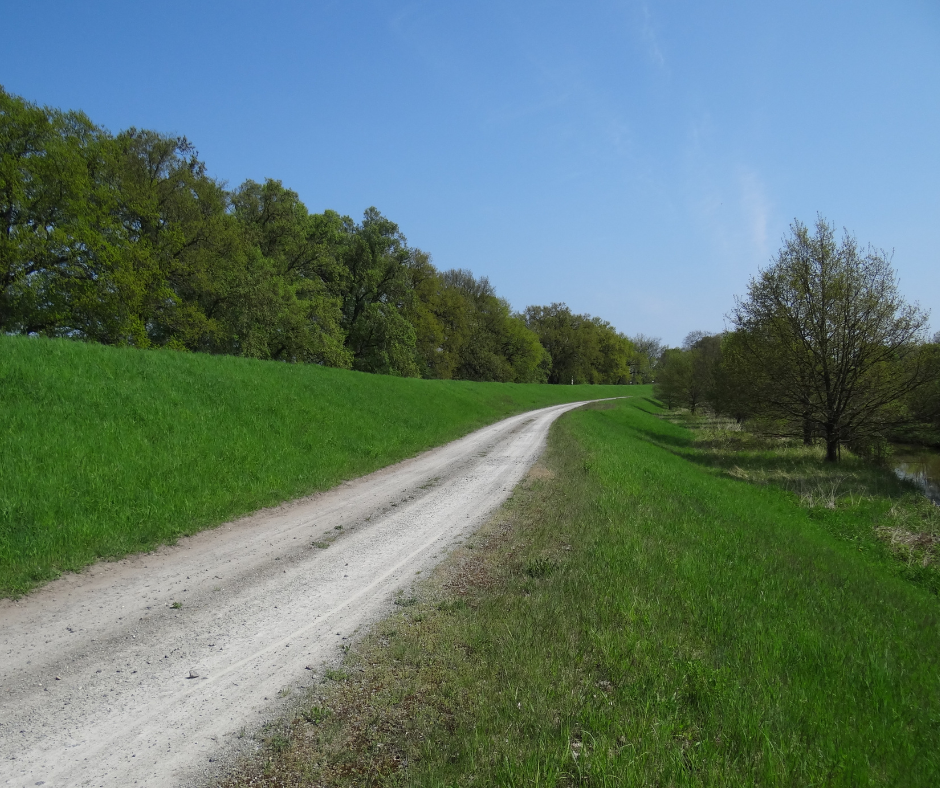Using Berms as Barriers
go.ncsu.edu/readext?871950
en Español / em Português
El inglés es el idioma de control de esta página. En la medida en que haya algún conflicto entre la traducción al inglés y la traducción, el inglés prevalece.
Al hacer clic en el enlace de traducción se activa un servicio de traducción gratuito para convertir la página al español. Al igual que con cualquier traducción por Internet, la conversión no es sensible al contexto y puede que no traduzca el texto en su significado original. NC State Extension no garantiza la exactitud del texto traducido. Por favor, tenga en cuenta que algunas aplicaciones y/o servicios pueden no funcionar como se espera cuando se traducen.
Português
Inglês é o idioma de controle desta página. Na medida que haja algum conflito entre o texto original em Inglês e a tradução, o Inglês prevalece.
Ao clicar no link de tradução, um serviço gratuito de tradução será ativado para converter a página para o Português. Como em qualquer tradução pela internet, a conversão não é sensivel ao contexto e pode não ocorrer a tradução para o significado orginal. O serviço de Extensão da Carolina do Norte (NC State Extension) não garante a exatidão do texto traduzido. Por favor, observe que algumas funções ou serviços podem não funcionar como esperado após a tradução.
English
English is the controlling language of this page. To the extent there is any conflict between the English text and the translation, English controls.
Clicking on the translation link activates a free translation service to convert the page to Spanish. As with any Internet translation, the conversion is not context-sensitive and may not translate the text to its original meaning. NC State Extension does not guarantee the accuracy of the translated text. Please note that some applications and/or services may not function as expected when translated.
Collapse ▲ If you want to create privacy, redirect wind, reduce noise, or stop erosion around your urban home, you can adapt some of the ecologically sound methods used in botanical gardens found in large cities. A botanic garden surrounded by an urban environment must create serenity in a sea of visual and audio confusion. One technique to screen out the noise and view is to form a low berm or earth mound around the perimeter or a selected area of a site. If planted with a mix of woody ornamentals, the height of the berm is increased, as is the sight, sound, and wind-blocking ability. Low-growing shrubs and herbaceous groundcovers can provide erosion control. Many new subdivisions have planted berms along their entrances.
If you want to create privacy, redirect wind, reduce noise, or stop erosion around your urban home, you can adapt some of the ecologically sound methods used in botanical gardens found in large cities. A botanic garden surrounded by an urban environment must create serenity in a sea of visual and audio confusion. One technique to screen out the noise and view is to form a low berm or earth mound around the perimeter or a selected area of a site. If planted with a mix of woody ornamentals, the height of the berm is increased, as is the sight, sound, and wind-blocking ability. Low-growing shrubs and herbaceous groundcovers can provide erosion control. Many new subdivisions have planted berms along their entrances.
When you are choosing barrier plants, try to visualize their year-round effect. Deciduous trees and shrubs provide an adequate buffer in summer when in leaf, but can leave the site over-exposed in winter. However, if your major consideration is blocking noise from neighborhood outdoor summer activities, then deciduous plants will work fine. Evergreens are preferable components of a berm if you want to block noise, sights, and strong winds all year.
Density and foliage type should also be considered. Trees with many branches and leaves work better as screening plants than those with sparse foliage. Species such as birch, oak, and beech produce a pleasant rustling sound that will mask ambient noise. In addition, oaks and beeches retain some of their leaves well into winter, adding to the sight and sound barrier in autumn and early winter.
Know the mature size of your choices for screen plantings before you purchase them. If you desire a 10-foot screen, you should not choose plants that will grow taller than that height. In fact, planting a species too tall for the site will force you to spend additional time pruning, especially if power lines or other overhead obstructions exist. When planting on a berm, consider the height of the earth mound in your calculations.
Another reason to choose several species is to avoid the devastating result if a disease or insect infestation threatens one species. Having to replace a few plants to fill in any holes that develop after a pest attack is better than having to redo an entire planting.
For a vigorous screen, be sure to select shrubs, trees, and groundcover plants suited to your soil and climate. Soil that is used to form a berm should drain well. Alternately, in raising the soil level you may also encounter rapid drying out of the soil unless the mound is covered with an organic mulch, such as wood chips. Whether planted on a berm or not, well-maintained, hardy species give the most enjoyment over the longest period of time. To develop a suitable list of plants for your conditions check out the N.C. Cooperative Extension Gardener Plant Toolbox.




